Korean Tea Guide: Benefits, Types, and When To Drink Them
Last Updated on April 30, 2025
While most of the world views tea as a beverage made by putting hot water on some type of leaf, Koreans seem to make tea with anything and everything they can put hot water on. Hot water on flowers? Why not? Hot water on some roots from the garden? Definitely. Because of this, traditional Korean tea houses can have long rather substantial lists of teas. It can be overwhelming.
It took me forever to remember the names of the Korean teas that I enjoyed and go figure, I often forget when it comes to seeing boxes of teas in the market. Since I’ve taken numerous a tourist to a traditional tea cafe and tried just about every one on the list now, I wanted to make a guide to Korean tea not only for my memory, but also for others.
Traditional tea cafes like Cha Masineun Tteul in the Bukchon Hanok Village have such amazing teas… if you know what you want. From floral infusions to root-based remedies, Korea offers a wide variety of traditional teas enjoyed for both flavor and health benefits.
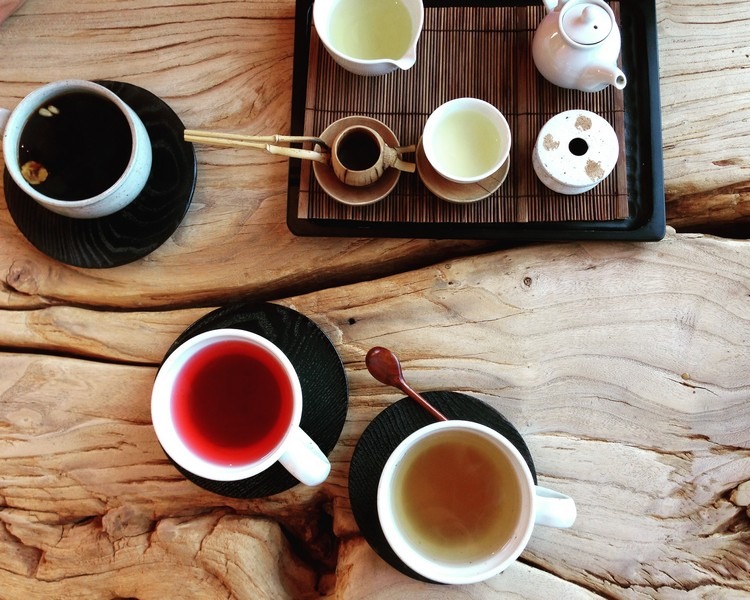
Korean teas are enjoyed for not only their taste but also for their medicinal properties and health benefits. While green tea is often considered one of the premier Korean teas, there are also fruit teas, flower teas, root teas and just so so many more.
These days you don’t even have to go to a tea house to get tea. Cafes around the country are also adding more teas to their menus and there are so many options that you can pick up in the markets for home use too now. Teas are so common in Korea that they’re even given to kids in daycares and kindergartens instead of water. Yes, it’s that prominent in the culture.
Feel free to skip around and check out what’s in this article. Here’s what you can find:
- The History of Tea In Korea
- Tea Experiences In Seoul
- Leaf Teas
- Flower Teas
- Fruit Teas
- Grain, Bean, & Seed Teas
- Root, Shoot, & Bark Teas
(This post contains affiliate links, which means I receive a certain percentage of a sale if you purchase after clicking at no cost to you. Thank you for your support.)

The History Of Tea In Korea
Tea goes back centuries in Korea and some sources have claimed that it goes as far back as the 2nd century. The tradition of tea has seen both times of high interest and periods of low but has often found refuge within Buddhist temples in Korea. Korean tea has a strong link with Korean Buddhism and Buddhists here have preserved the tradition of tea drinking.
According to the Record of Gaya, Queen Heo Hwang Ok, originally from Ayodhya in India, brought a tea plant from India to Korea and planted it on Baegwolsan Mountain in Changwon. Fruit teas like the magnolia berry tea and goji berry tea were being used since the Three Kingdoms Period in Korea. The systematic planting of tea bushes began with the introduction of the Chinese tea culture however and then by Buddhist monks that had continued the traditions centuries later.


During the Joseon Dynasty, Korean tea was used during rites and ceremonies by the royals and upper class. Near the end of the Joseon Dynasty was when commoners adopted the practice in their own family rites as well. The first modern tea house was established in 1924 and the popularity of tea ebbed and flowed. The last resurgence of tea in Korea in the 1970s is often attributed to Choi Beom Sul, the head monk of the Dasolsa Temple in the Jirisan Mountain range. He taught all of the key figures that led to a major revival in Korean tea that led to the boom of the 90s.
Korean tea production peaked in the mid-00s which was based on the green tea health craze that swept through the middle class. Today, you can find traditional tea houses all over but especially in the Insadong District. There are also some gorgeous tea houses made by the premier green tea producer in Korea, O’Sulloc.
These days, there are so many cafes and when coffee burst into the scene, it made it even more popular to go to a café while you’re out and about. Did you know the sachets of instant coffee with instant coffee, sugar, and creamer were even invented in Korea? Whether you’re going out for tea or coffee, there’s a café for you around every corner and on every street at this point but you need to know where to go because the best tea houses are the ones that are really JUST tea.

Tea Experiences In Seoul
If you really want to learn about the rich tea history in Korea and partake in a traditional tea ceremony or learn about brewing and sipping, then definitely look into a tea experience. If you plan to travel to Jeju, Korea, look into staying at Chuidasun Resort, a hotel for tea lovers.
Traditional Korean Tea Ceremony & Tea Cookies: Experience the traditional Korean tea ceremony with an expert and make cookies to go with the tea. Dress up in a traditional Korean tea ceremonial robe and taste some delicious teas.
- You can book this experience on Klook.
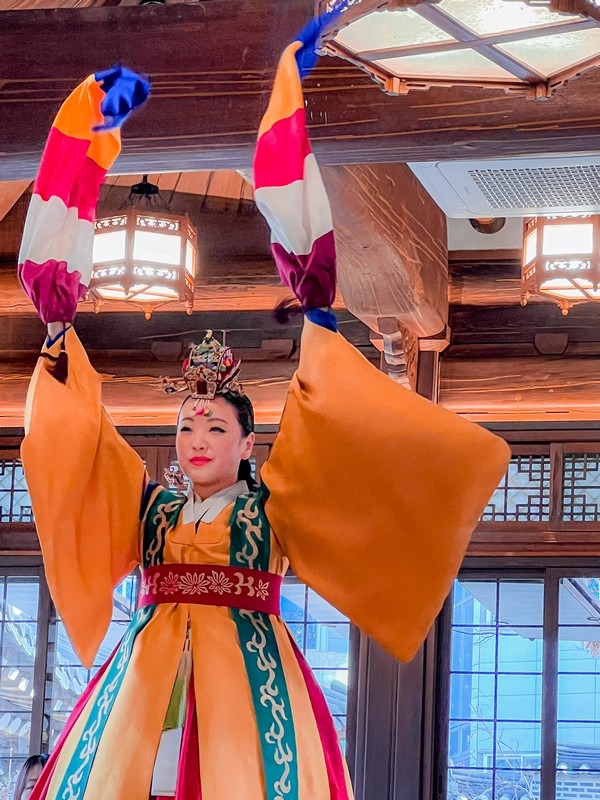
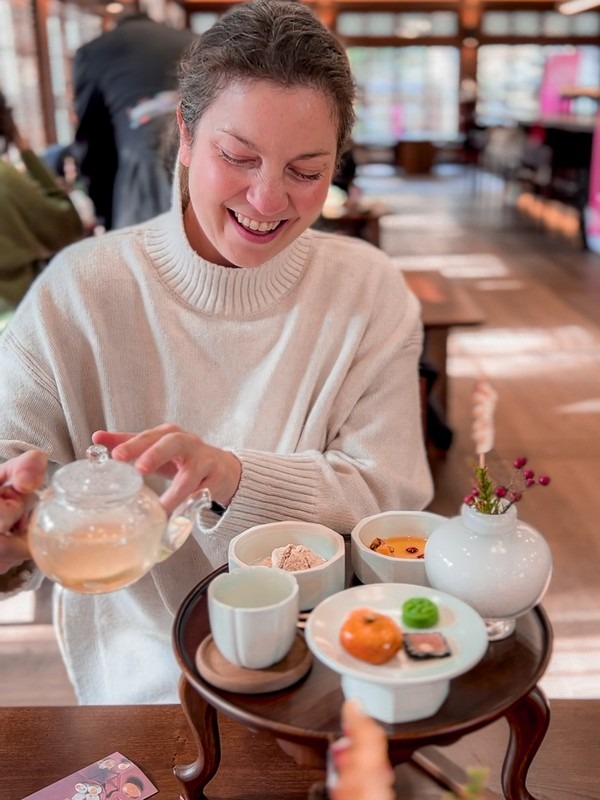
Korea House: This traditional space near the vibrant Myeongdong and Namsangol Hanok Village offers fantastic traditional Korean tea experiences complete with a show. The tea courses change each season so check throughout the year to see what they’re offering.
- Address: 10 Toegye-ro 36-gil, Jung-gu, Seoul (서울특별시 중구 퇴계로36길 10)
- Hours: Tuesday – Sunday: 12:00pm ~ 3:00pm; 6:00pm ~ 10:00pm
- Days: Closed Mondays, Lunar New Year, and Chuseok
- How To Book: You can book this experience on Catchtable
Korean Teas You Need To Try
What tea connoisseurs might be especially keen to note is that Korean “teas” are really mostly infusions as they don’t contain Camellia Sinensis, the green tea leaf. Koreans generally refer to any hot, not coffee, beverage. With that in mind, here is a list of Korean teas that include both the leaf teas and the numerous infusions that exist.
Traditional Korean Leaf Teas & Their Benefits

Nok-cha (녹차) Green tea
The most well known of the Korean teas is green tea so I won’t really get into it too deeply for this post. Some basics though, green tea contains less caffeine than coffee but enough to produce an effect.
- Health Benefits: Green tea is loaded with antioxidants which improve brain function, help with fat loss, protect against cancer, and lower the risk of heart disease. There are even more health benefits but you probably already know because this is an ultra popular tea… especially here in Korea.
- How & When To Drink it: Drink this any time anywhere.
- Buy Some: You can buy some green tea from the premier Korean green tea producer O’Sulloc on Amazon.com
Fun Fact: Studies have even shows that people who drink green tea may live longer than those who don’t.
Sollip-cha (솔잎차) Pine Needle Tea
This herbal tea is made using the pine needles from the Korean red pine. There’s also a pine leaf version that is called baegyeop-cha 백엽차 FYI, so don’t get confused about that. The pine needles are harvested around December from 10 to 20 year old trees.
- Health Benefits: Pine needle tea is rich in Vitamin C, actually five times the concentration found in lemons, and relieve heart disease, varicose veins, skin complaints and fatigue. This tea also has high levels of Vitamin A which is good for eyesight, improves hair and skin regeneration and improves red blood cell production.
- How & When To Drink it: There are two types of sollip-cha. The first is harvested, soaked in water for a day, cleaned, rinsed, and dried. The fresh pine needles are infused over low heat when ready to drink and honey or sugar is added. The other version is fermented pine needles. The pine needles are harvested, cleaned and then placed in a sugar solution and fermented in a sunny place for a week or more. To drink, the fermented produce is filtered and consumed as a cold tea.
- Buy Some: You can buy some Pine Needle Tea here on Amazon.com
Fun Fact: Taoist priests drank pine needle tea because they believed it made them live longer and there is evidence to suggest it helps to slow the ageing process.
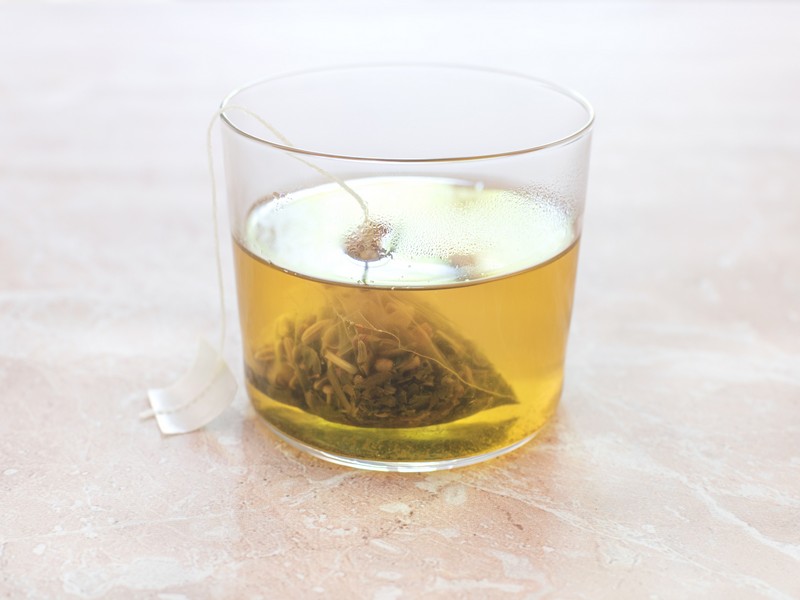
Yeonnip-cha (연잎차) Lotus Leaf Tea
Made from the young leaves from the lotus plant, the leaves are heat-treated by steaming or roasting and then dried. This is a tea that has been enjoyed for thousands of years and has a ton of benefits for the body.
- Health Benefits: This tea promotes digestive and circulatory health. Lotus leaf tea benefits the spleen and stomach and is considered a slimming tea in China. Antioxidants have acne-fighting effects, too.
- How & When To Drink it: Drink during the day, not in the evening as it can cause the drinker to go to the bathroom a lot.
- Buy Some: You can buy some here on Amazon.com
Gamnip-cha (감잎차) Persimmon Leaf Tea
Made from the persimmon leaves that grow plentifully in Korea. This caffeine-free tea is bitter to taste. The persimmon leaves are harvested from trees growing naturally in the valleys in Korea in June.
- Health Benefits: This tea is rich in vitamin C to boost the immune system and the metabolism. It’s highly suggested to people that suffer from acid reflux.
- How & When To Drink It: Simply steep for 2-3 minutes
- Buy Some: You can buy some here on Amazon.com
Fun Fact: Though the tea comes from the persimmon tree, it doesn’t taste like the fruity persimmon.
Popular Korean Flower Teas & Their Benefits

Gukhwa-cha (국화차) Chrysanthemum tea
This tea is made using Indian chrysanthemum flowers that are collected before they’re fully open. The flowers are blanched in bamboo salt water, washed, and dried in an ondol room for later use (Ondol is the traditional floor heating system in Korean homes). When you order a cup, three or four flowers are placed in a cup and hot water is poured over them. In Korea, this tea is also served in a honey variation in which the flowers are preserved in honey for weeks and then for drinking hot water is poured over a scoop of the honey flower mixture.
- Health Benefits: There is no caffeine in this tea and it is believed to help with varicose veins, the flue, sore throats, fevers, angina, the cold, high blood pressure, and dizziness.
- How & When To Drink it: This is a popular tea in the winter months in Korea.
- Buy Some: You can buy some here on Amazon.com
Fun Fact: Even though this tea has been enjoyed in China for hundreds of years, there has been little testing on the health benefits of this tea so its health benefits are widely believed… but not yet proven.
Mindeulle-cha (민들레차) Dandelion tea
This tea has a clean and subtle fragrance. Some people can be allergic to this tea though, so be careful. One study found that there was increased urine output after 2 one-cup servings so it can reduce water weight, but don’t drink it before bed.
- Health Benefits: Dandelions provide powerful antioxidants and have been known to be effective in liver detoxification.
- How & When To Drink It: If you want to try to make this one your own as dandelions are indeed plentiful, you can just make sure the plants haven’t been treated with chemicals. Harvest young dandelions, clean them and prepare them and then pour hot water on them for 15-20 minutes.
- Buy Some: You can buy some here on Amazon.com
Fun Fact: Dandelion tea is often used as a coffee substitute for people that like the taste of coffee but can’t handle all of the caffeine.
Delicious Korean Fruit Teas & Their Benefits

Daechu-cha (대추차) Jujube tea
This tea is made using jujubes and is a pretty popular one so is easy to find on many menus when you head into cafes whether they are tea cafes or just general cafes too. Daechu-cha is made by boiling dried jujubes or more often, a preserve is made by simmering dried jujubes on low heat for about 8 hours until it is a sweet syrup. This is then used to make the tea later. This syrup can also be found in markets around the country if you want to drink this at home.
- Health Benefits: This tea has high levels of iron, potassium, calcium, phosphorous, and Vitamin B and C. It has been traditionally used to help with sleep troubles and insomnia. It’s rich in flavonoids – saponins and polysaccharides. It also helps relieve anxiety.
- How & When To Drink it: You can have it hot or cold any time of the year.
- Buy Some: You can buy some here on Amazon.com
Fun Fact: Jujubes have been proven to have a calming effect on the brain and nervous system.

Maesil-cha (매실차) Plum tea
This tea uses green Korean plums and has a sharp tart flavor. I LOVE this tea and we are often offered this after a meal in restaurants. If you want to try making this yourself, you can get the dried plums at traditional markets like the Mangwon Traditional Market and then put them in a jar with sugar and eventually you’ll get a very sweet liquid that you can use to make the tea.
- Health Benefits: Helps with fatigue and stimulates the appetite. Plum tea helps to detoxify the body and relieves symptoms of food poisoning and diarrhea.
- How & When To Drink it: It is enjoyed hot or cold depending on the season.
- Buy Some: You can buy some here on Amazon.com.
Fun Fact: While it’s called “plum tea” in Korea, this drink is called “apricot tea” in Japan.
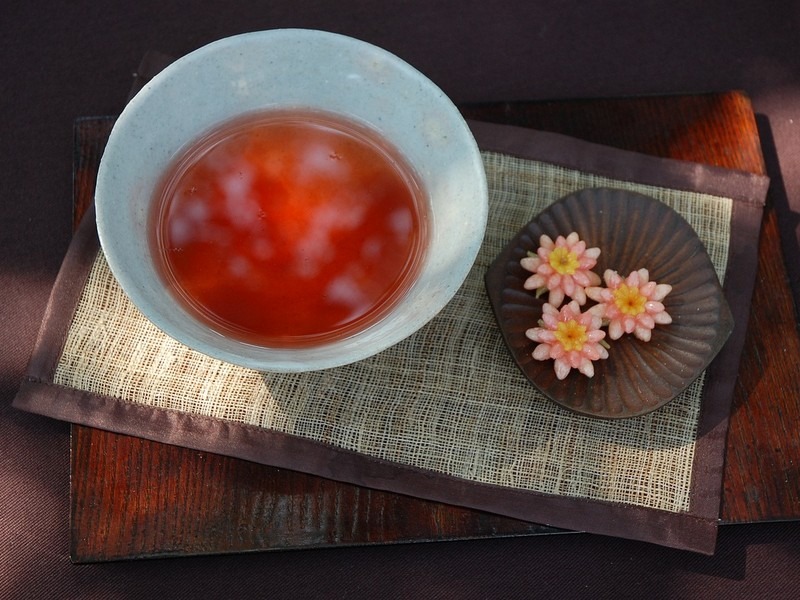
Omija-cha (오미자차) Five Flavors tea
This one has been one of the easiest for me to remember because it says “five” right in the name. “오” is five. This tea is also known by a couple other names including magnolia berry tea or schisandra tea if those are more familiar. If the dried berries are boiled in hot water, they come out quite bitter but when steeped in cold water as is traditional you might taste a range of of five flavors including: bitter, sweet, sour, salty, or pungent.
- Health Benefits: This tea relieves fatigue and thirst, improves kidney and liver function as well as blood circulation. This tea helps increase resistance to disease and stress and beautifies the skin.
- How & When To Drink it: This tea can be enjoyed both warm or cold and is often sweetened with sugar or honey a touch.
- Buy Some: You can buy some here on Amazon.com
Fun Fact: This tea is also known as schisandra tea.
Yuja-cha (유자차) Citron tea
Korean citron tea, also called yujacha (유자차), tastes exactly as the name would suggest, like citron. It’s made from yuja, a citrus fruit that looks like a small grapefruit and is a cousin to the mandarin. The tea is made using the yuja marmalade. But it’s not consumed just because of the great lemony flavor and enticing aroma that emanates from the cup, it has some great health benefits as well.
This tea can be enjoyed at almost all traditional tea houses and at many of the modern cafes too, but it’s also super easy to make. Any Korean market will have an aisle of teas and in a jar will be the citron concoction. Heat up some water in a kettle, take a couple spoonfuls of the concoction (or however much the jar recommends) and mix together.
- Health Benefits: It helps relieve coughs and sore throats. It is a great source for vitamin C and has been used to treat the common cold as well as soothe seasickness, enhance skin complexion, suppress fevers and it even contains calcium to help strengthen bones. It’s great for blood circulation and stimulates the digestive system.
- How & When To Drink It: It can be enjoyed hot or cold and the citron syrup can also be used when cooking other dishes too. This is commonly enjoyed during the winter in Korea but you can get it anywhere anytime.
- Buy Some: You can buy some here on Amazon.com
Fun Fact: King Sejong loved this tea and often promoted it.
Eunhaeng-cha (은행차) Ginkgo tea
You can’t walk down the street in the autumn and miss the odorous Ginkgo. While you might try to side step these fruits, you’ll also notice older Korean women scooping them up to make syrups and tea.
- Health Benefits: This tea is believed to be effective in alleviating arteriosclerosis, hypertension, and menopausal disorders, as well as preventing dementia and gray hair.
- How & When To Drink It: This can come in a powder form that you mix with water, but I’ve most commonly had it in Korea after it’s been made into a syrup and hot water is poured over it.
- Buy Some: You can buy some here on Amazon.com
Fun Fact: The Ginkgo trees first appeared over 290 million years ago and the leaves have been found in fossils.
Sansuyu-cha (산수유차) Carnelian cherry tea
The sansuyu flowers are beautiful in the spring and just as beautiful are the red berries they produce in the autumn. The berries from the plant are dried and used for this medicinal herbal tea that has a tart taste.
- Health Benefits: This tea is rich in vitamin A and believed to help improve the circulatory system.
- How & When To Drink It: It is recommended to add honey to this tea to offset the pungent sour taste of the tea.
Seokryu-cha (석류차) Pomegranate tea
Pomegranate tea is a vibrant red in color and has a tart taste. It’s really delectable and since pomegranates can be expensive in Korea, you should take advantage of ordering this whenever you see it on a tea house menu.
- Health Benefits: Pomegranates are known as a super fruit and can help tighten skin, strengthen muscles, boost the immune system, lower the cholesterol and prevent heart disease.
- How & When To Drink It: This is a great tea that you can make on your own. Check out this recipe by Maangchi to see how. Should be served hot.
Fun Fact: Koreans believe pomegranate tea is great for women and you’ll see a lot of Korean women drinking this when going through menopause.
Korean Grain, Bean, & Seed Teas You’ve Probably Never Heard Of
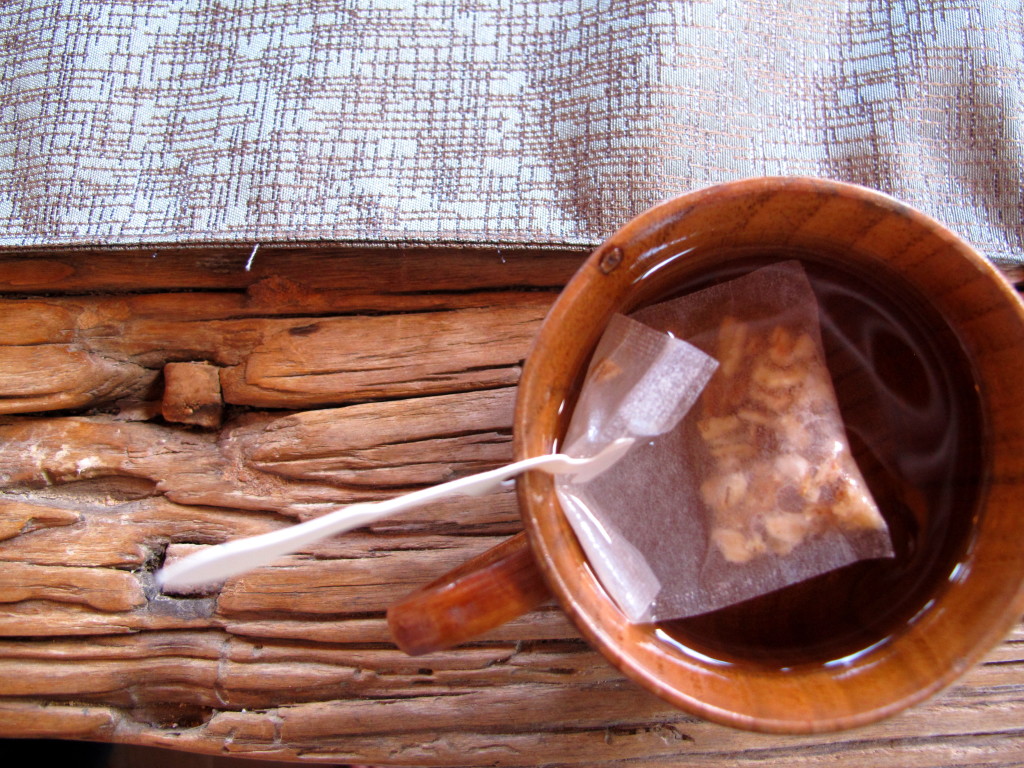
Bori-cha (보리차) Barley Tea
This is a tea that can be found everywhere. My Korean mother-in-law has it in the fridge every time we’re there and my daughter’s daycare and kindergarten are always giving it to the kiddos. It’s at restaurants and cafes. It’s not something you really need to order because you’ll just be given it instead of water at so many places. Barley tea has a mild nutty flavor and once you have a couple glasses, you’ll begin to find it as refreshing as we do. We now have a jug of barley tea in our fridge at all times too!
- Health Benefits: This tea is caffeine-free and helps with digestion, weight loss, and controls the blood sugar level. You can drink it anytime throughout the day and Korean mothers even begin giving this to their children when there as young as six months old.
- How & When To Drink it: You can have this either hot or cold year round.
- Buy Some: You can buy some here on Amazon.com
Fun Fact: If you ask for water in the traditional markets when you’re eating, you’ll must likely get barley tea.
Memil-cha (메밀차) Buckwheat Tea
This is a really common tea that is often found in restaurants and in households in Korea. Buckwheat is used in other delicious dishes like naengmyeon and spicy buckwheat noodles which you can get at Gwangjang Market in downtown Seoul if you want some good eats. Buckwheat kernels are first roasted and then boiled to make this savory tea that tastes a bit more nutty. It can be pretty filling.
- Health Benefits: This tea is caffeine-free and improves circulation, prevents varicose veins, and helps to boost your metabolism. If you need some antioxidants, look no further. This tea prevents edema, has cardiovascular benefits, reduces blood glucose and is beneficial in treating diabetes.
- How & When To Drink it: This can be enjoyed both hot or cold any time of the year.
- Buy Some: You can buy some here on Amazon.com
Fun Fact: Some people like to drink buckwheat tea after adding a little sweetener and milk.
Yulmu-cha (율무차) “Job’s Tears” tea
Obviously not literally made from Job’s tears, this tea comes from a plant that is named after the Biblical character, but it also goes by the name of coix seed. The tea is thick and soupy so it’s quite different from sipping the others on this list. This is like having a hearty meal in a cup. One of the traditional uses for Job’s Tears is to treat allergies, but it’s also an immune booster. This grain is actually gluten-free so it’s a good replacement for some other grains if you can’t ingest gluten.
- Health Benefits: This tea is high in protein and fat. This tea is good for reducing levels of cholesterol, cancer prevention and treatment, helps with endocrine disorders, osteoporosis, and weight loss.
- How & When To Drink it:
- Buy Some: You can buy some here on Amazon.com
Fun Fact: This has been shown to ease period cramps more effectively than over the counter medicine.
Oksusu-cha (옥수수차) Corn Tea
Koreans love corn and you’ll find it on everything from pizza and made into cakes and ice creams. It stands to reason that there is corn tea as well. The corn tea is made from dried roasted kernels and then these are boiled to produce tea. Koreans will tell you that the corn is already sweet enough, but if you don’t think so, it’s also common to add a bit of sugar to this tea.
- Health Benefits: This tea is rich in Vitamin B6, B12, and C and is great for hydration.
- How & When To Drink It: Boil the roasted kernels until the water turns yellow and then strain the kernels before serving.
- Buy Some: You can buy some on Amazon.com
Fun Fact: This tea is also a replacement for water in a lot of restaurants so if you get tea on the table instead of water, it’s probably this one.
Oksusu-Suyeom-cha (옥수수수염차) Corn Silk Tea
While the corn tea above is made from the corn kernels, this tea is made from the silky part of the corn husk. No part of the corn should be left behind after all. This version of the corn tea is a bit sweeter than the corn kernel tea.
- Health Benefits: This tea is a natural diuretic that will help to cleanse the urinary tract system and helps to regulate the blood sugar levels.
- How & When To Drink It:
- Buy Some: You can buy some on Amazon.com
Fun Fact: Corn silk has been used by people all around the world from ancient times due to its healing properties.
Herbal Korean Root, Shoot, & Bark Teas & Their Benefits
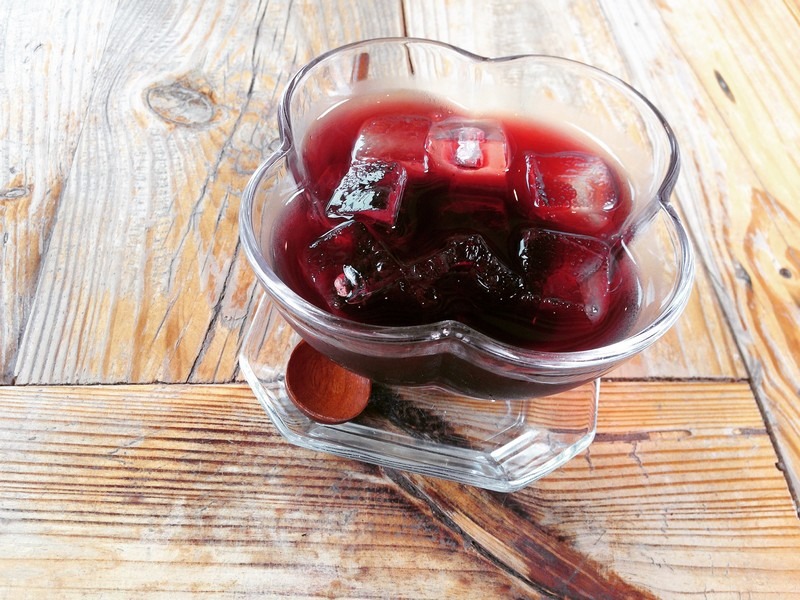
Danggwi-cha (당귀차) Angelica Root Tea
This plant isn’t just popular in Korea, it’s also been used for medicinal purposes in Finland, Norway, and Sweden as well as by the Inuits in Greenland. Today, a lot of herbalists take Angelica root for a variety of diseases and disorders. The entire plant can be used in food, spices and medicines, but the Angelica root is mainly used in the herbal medicines so as a tea, you can bet it’s got some good stuff for you. The roots are harvested in the winter when they are the most bitter and then they are dried in preparation.
- Health Benefits: Angelica root tea helps with loss of appetite, heartburn, indigestion, intestinal gas, colic, bad blood circulation, arthritis, bronchitis, asthma, colds, flu, and urinary tract infections.
- How & When To Drink it: This is usually enjoyed hot.
- Buy Some: You can buy some here on Amazon.com
Fun Fact: This tea is also believed to help people that suffer from cold fingers and toes.
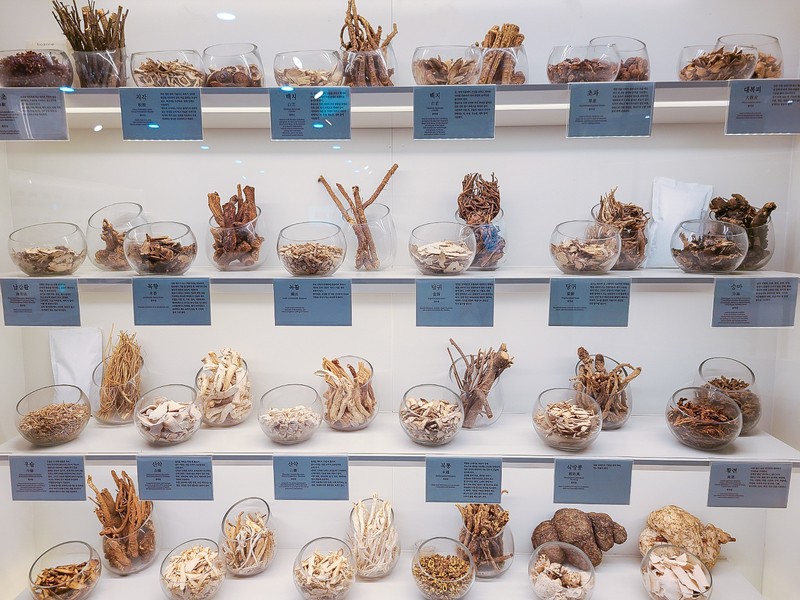
Gyepi-cha (계피차) Cinnamon Tea
Cinnamon is enjoyed the world over and cinnamon tea is as well. Who doesn’t like a cup of cozy? In Korea cinnamon tea is often a mixture of cinnamon and ginger and the Korean version also uses only the bark from the Cassia cinnamon. The tea is then sweetened a touch with honey or sugar and served with a garnish of jujubes.
- Health Benefits: Cinnamon tea is full of antioxidants and cinnamon bark contains catechins and procyanidins which protect the body from oxidative stress caused by free radicals. Cinnamon tea also helps to lower the risk for heart disease, protects overall health and mental capacity and helps to boost the immune system.
- How & When To Drink it: This is usually enjoyed warm in any season.
Fun Fact: Cinnamon tea is enjoyed all around the world. In Chile, the tea is called “te con canela”.
Insam-cha (인삼차) Ginseng tea
Ginseng is one of those things that I didn’t know too much about before moving to Korea but since coming here have had time and time again. It is everywhere from teas to ginseng candies and everything in between. In Korea the best ginseng roots come from Punggi and Geumsan and both have ginseng festivals to celebrate.
- Health Benefits: Ginseng tea stimulates the appetite, prevents fatigue, nervous disorders, and diabetes. It’s a natural energy booster and appetite stimulant as it is rich in saponin.
- How & When To Drink it: This is enjoyed hot throughout the year.
- Buy Some: You can buy some here on Amazon.com
Fun Fact: There’s a belief that ginseng should NOT be ingested by people who tend to have a higher body temperature but this is NOT true! Ginseng can raise or lower the heat in the body depending on the person and the amount of ginseng ingested.
Hongsam-cha (홍삼차) Red Ginseng Tea
You will see red ginseng teas all over the souvenir shops and just know that it isn’t just for tourists. This makes a great gift when you’re in Korea for almost any event. Korean red ginseng is known for its natural health benefits and is used in supplements too.
- Health Benefits: It helps to strengthen the immune system, and helps with brain functioning, decreasing stress and boosting energy.
- How & When To Drink It: This can be enjoyed both hot or cold. I’ve had it gifted to me in sachets already prepared before and just enjoyed it cold. When served hot, this drink is usually served with honey and pine nuts.
- Buy Some: You can buy some on Amazon.com
Fun Fact: You can also find ginseng roots encased on bottles for sale in Korea. The peculiarly shaped roots resemble little human figures.
Saenggang-cha (생강차) Ginger tea
Made using ginger root that has been stored with honey, this is a winter pick-me-up tea. Ginger is believed to warm the body and help with symptoms related to fatigue. Ginger also helps neutralize toxicity in the body. This has a strong taste but has become one of my favorite teas.
- Health Benefits: Used to treat diarrhea, stomachaches and a low body temperature.
- How & When To Drink it: This is a tea that is often taken at the first sign of a cold to prevent the chills and fevers.
- Buy Some: You can buy some here on Amazon.com
Fun Fact: Ginger tea is usually served garnished with pine nuts in Korea.
Dunggulle-cha (둥굴레차) Solomon’s Seal Root Tea
A lot of Koreans don’t really chug water like Americans do. My husband doesn’t like the “taste” of water as he says. For people like him, they’ll often drink dunggulle-cha instead which has a more savory and nutty flavor. If I want to make sure my husband is hydrated, I’ll be sure to make some of this rather than pouring him a glass of water.
- Health Benefits: This tea helps to calm the nerves and acts as a mild diuretic and detoxifier. It helps to lower blood pressure and aids in cardiovascular regulation.
- How & When To Drink It: This can be enjoyed both hot and cold. I usually brew a big pot and let it steep, remove the tea bags and put it into a water pitcher in the refrigerator like my husband’s mother does.
- Buy Some: You can buy some on Amazon.com
Yeongeun-cha (연근차) Lotus Root tea
Did you ever have that one friend in school growing up who would always get nose bleeds? If they lived in Korea, their mother would probably give them this tea. Koreans believe lotus root tea is great for stopping nose bleeds.
- Health Benefits: Lotus root is known to boost digestion, regulate blood pressure, and is good for the hair and skin.
- How & When To Drink It: Place 1-2 teaspoons of lotus root into a cup and pour hot water over it and let steep for 5 minutes before removing the root and enjoying the tea. You can drink this either hot or cold and add honey as a sweetener.
- Buy Some: You can buy some on Amazon.com
Fun Fact: Lotus root is enjoyed as a side dish in Korea as well. Be sure to try it if you see it on the table.
Did you like this post? Pin it!
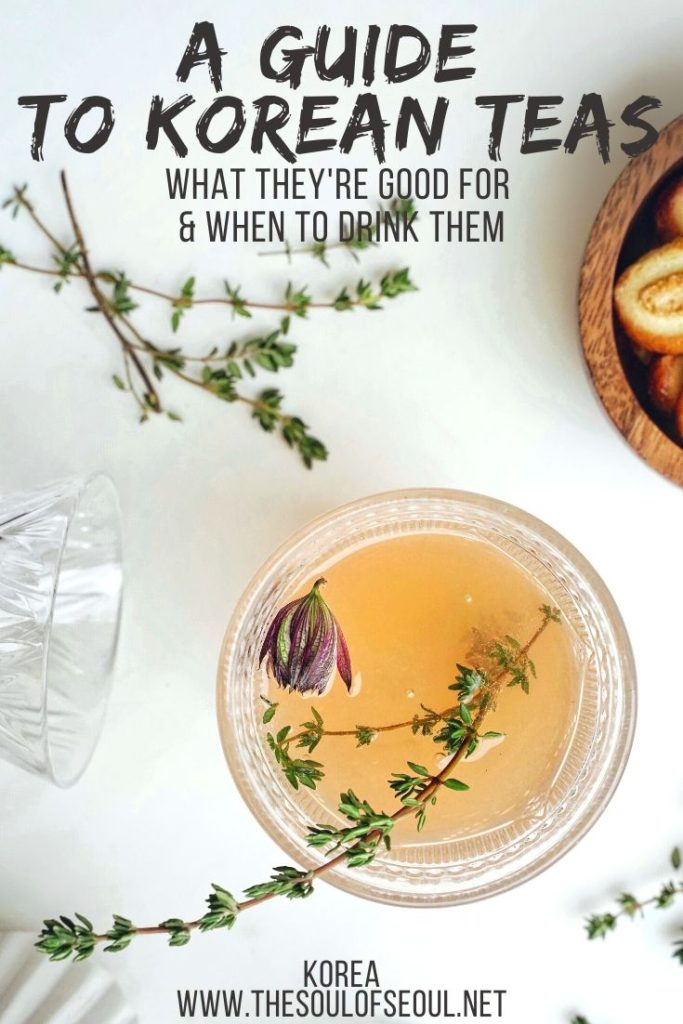
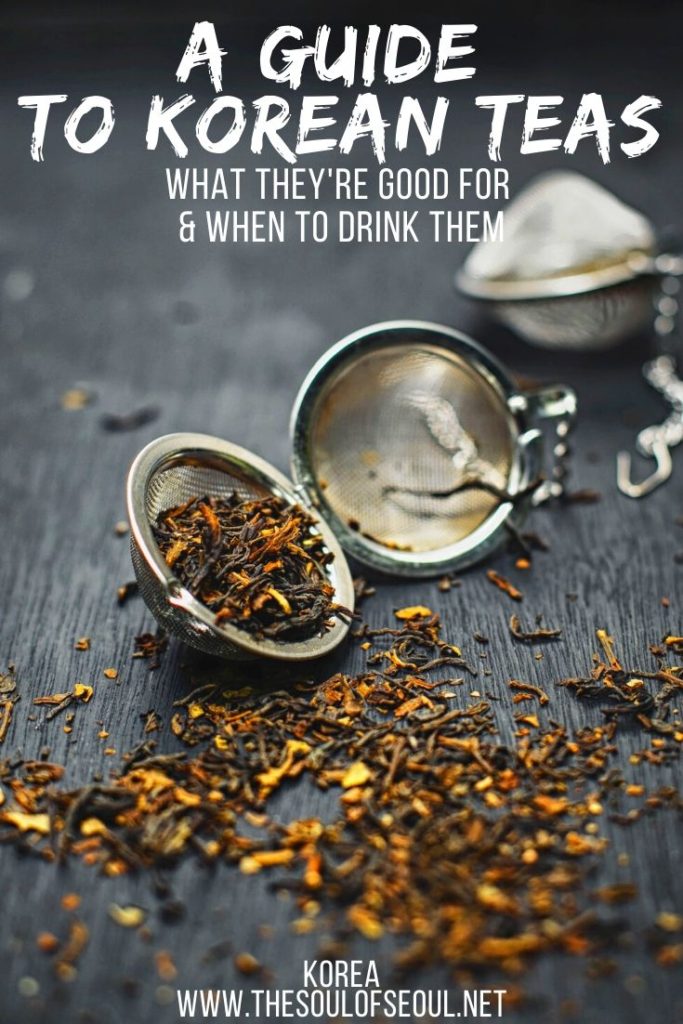



3 Comments
Jess
I absolutely loved the coffee and tea houses in Insadong also. Tea Therapy near Bukchon was my favorite when I visited. Do you recall the type of nuts or seeds served along with the dried jujube that they offered alongside the tea? I’m wondering if it’s a common snack served with tea in Korea? I really enjoyed it and would like to have it now that I’m back home also. Thank you and I enjoyed your blog post and reminiscing about my lovely tea house experiences in Korea also.
Anne
I was diagnosed with Type 2 diabetes in 2014. I am still on medication and I am looking for natural remedies to reverse the symptoms of this chronic condition. I am interested in knowing more about the blend of tea that can help me please. I live in Papua New Guinea. Many thanks for your help.
Jennifer
You might be looking for Solomon’s Seal tea. I used to drink it all the time when I was sick and living in Korea. Among it’s many benefits Solomon’s seal apparently can help control blood sugar levels, however the references are in debate about that.